In recent years, growth hacking has emerged as a dynamic and innovative approach to fueling business expansion. Originally associated with startups seeking rapid growth on a shoestring budget, its principles have proven to be adaptable and valuable for businesses across various sizes and industries. The essence of growth hacking lies in its ability to identify unconventional strategies and capitalize on opportunities that traditional marketing approaches might overlook.
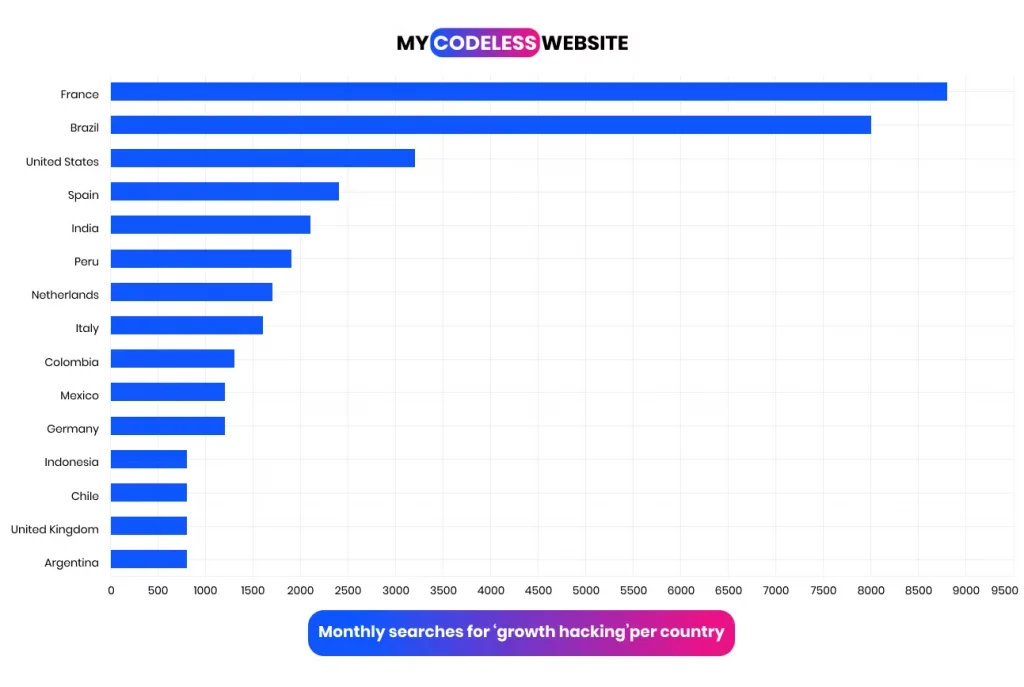
While the term “growth hacking” might evoke images of agile startups navigating the competitive landscape, its applicability extends far beyond the realm of fledgling businesses. Large enterprises and established companies are increasingly recognizing the value of incorporating growth hacking principles into their strategies. According to a survey conducted by Deloitte, 89% of executives from large organizations view growth hacking as a crucial element for sustaining competitiveness in today’s business environment.
What is Growth Hacking?
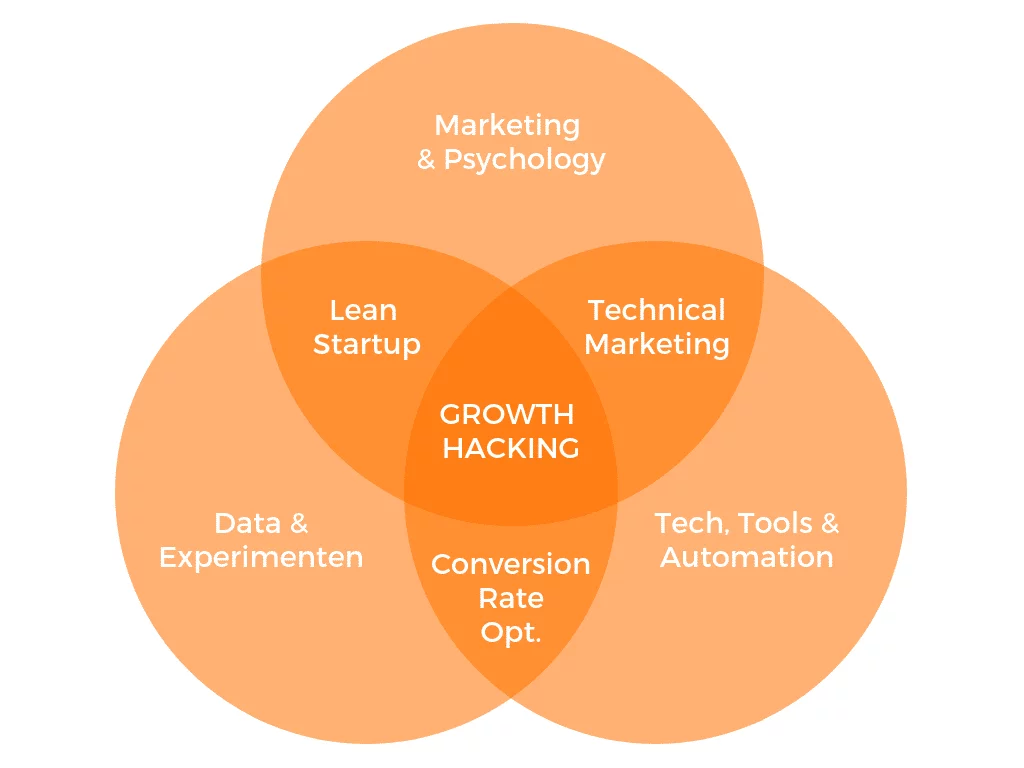
Source: Growwithwizard
Growth hacking is a marketing strategy that focuses on rapid experimentation, resource optimization, and creative techniques to achieve accelerated business growth, particularly in the digital realm. It involves identifying and implementing unconventional, often low-cost methods to acquire and retain customers, drive user engagement, and increase revenue.
Key principles of growth hacking include:
- Experimentation: Growth hackers constantly test different ideas, channels, and strategies to identify what works best for their specific business objectives. This iterative process involves quick and data-driven experimentation.
- Data-Driven Decision-Making: Growth hacking relies heavily on data analysis to measure the success of various initiatives. By closely monitoring key performance indicators (KPIs), growth hackers can refine their strategies based on real-time insights.
- Cross-Functional Collaboration: Growth hacking often involves collaboration between various departments, such as marketing, product development, and customer support. This cross-functional approach ensures a holistic view of the customer journey and opportunities for improvement.
- Focus on User Acquisition and Retention: Growth hackers prioritize acquiring new users and retaining existing ones. Strategies may include referral programs, virality, social media optimization, and other tactics aimed at expanding the customer base.
- Creativity and Innovation: Growth hacking encourages out-of-the-box thinking and innovative solutions to marketing challenges. It often involves leveraging emerging technologies, platforms, and trends to gain a competitive advantage.
- Scalability: Successful growth hacking strategies are designed to scale rapidly. Techniques that prove effective in the early stages can be amplified to drive exponential growth as the business expands.
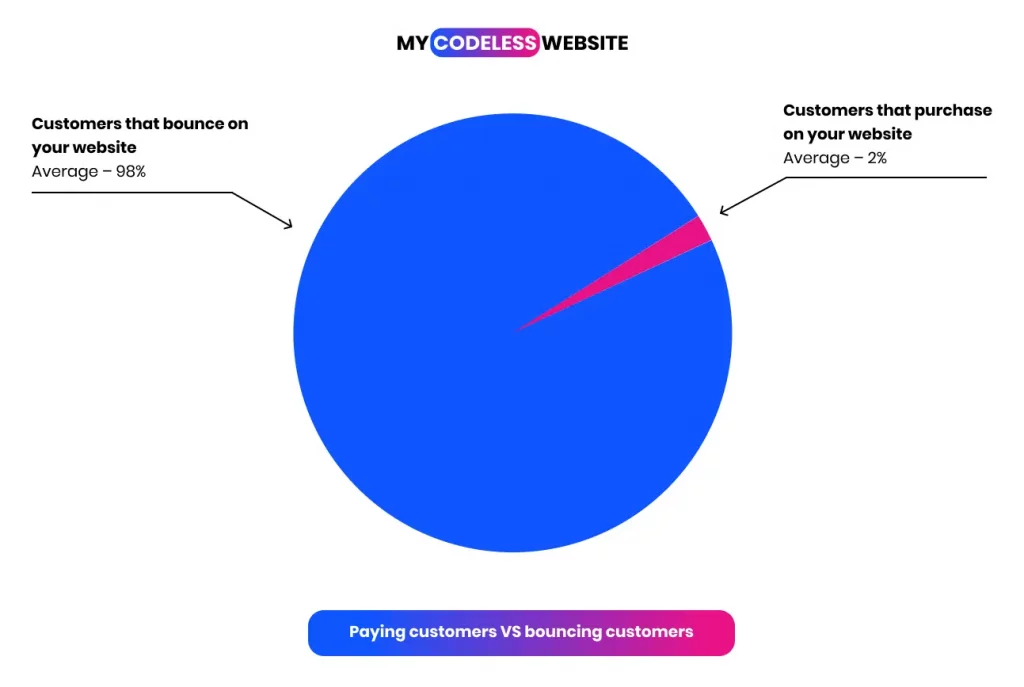
Top Growth Hack Success Strategies:
1. Dropbox: Leveraging Referral Marketing
Referral marketing involves rewarding individuals for introducing new customers, thereby expanding a company’s user base. This proven marketing strategy is highly effective for rapid business growth.
Harnessing the influence of trusted recommendations from friends and family, Dropbox, a file hosting service, strategically utilized referral marketing to boost its user numbers. According to Nielsen’s study, 89% of individuals consider recommendations from acquaintances as the most trustworthy form of advertising.
Dropbox’s referral deal was straightforward: When a customer referred someone, and the referral signed up, both parties received an additional 500 MB of free storage space. This process could be repeated, allowing users to accumulate more space, with a cap set at 16 GB.
The brilliance of Dropbox’s double-sided referral program lies in its mutual benefit. Both the person making the referral and the new user receive rewards, creating a win-win situation.
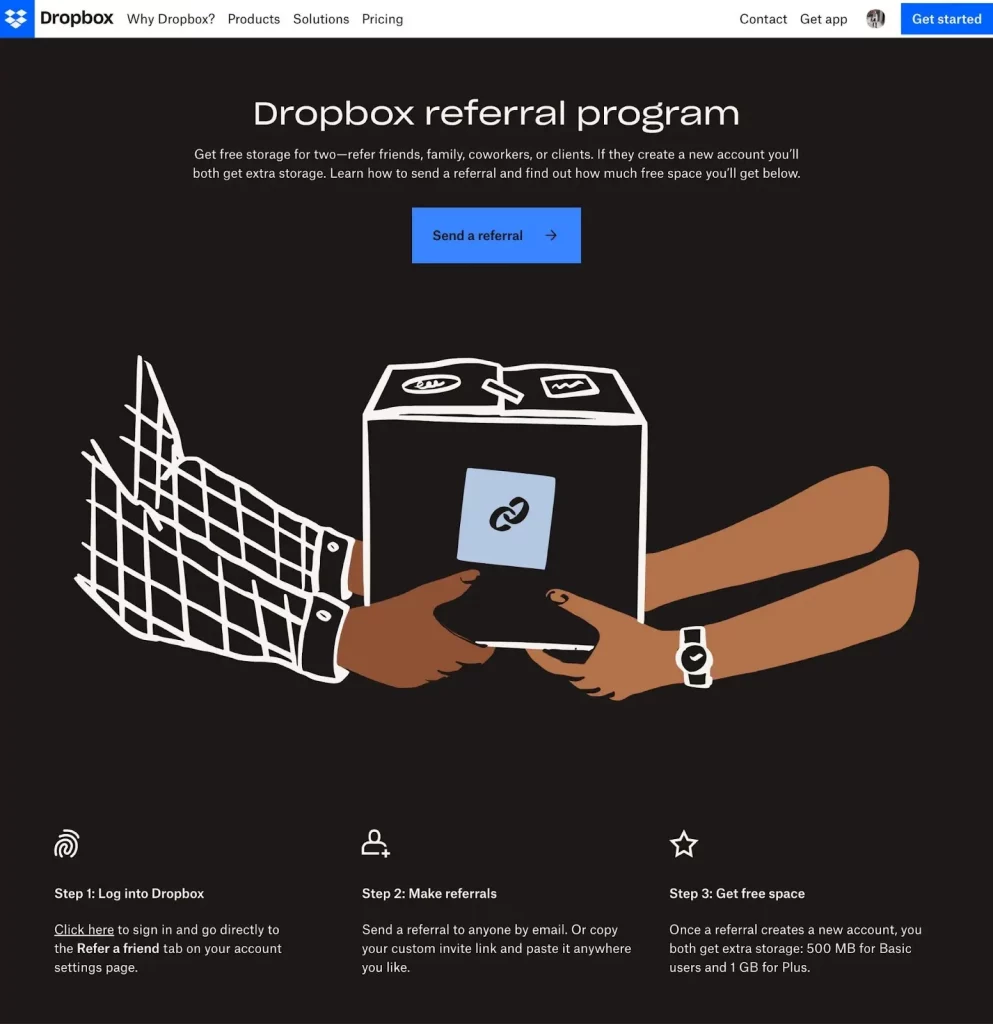
To maximize accessibility, Dropbox seamlessly integrated the referral program into its onboarding process. During signup, new users were presented with the opportunity to enhance their storage space by immediately sharing a referral link.
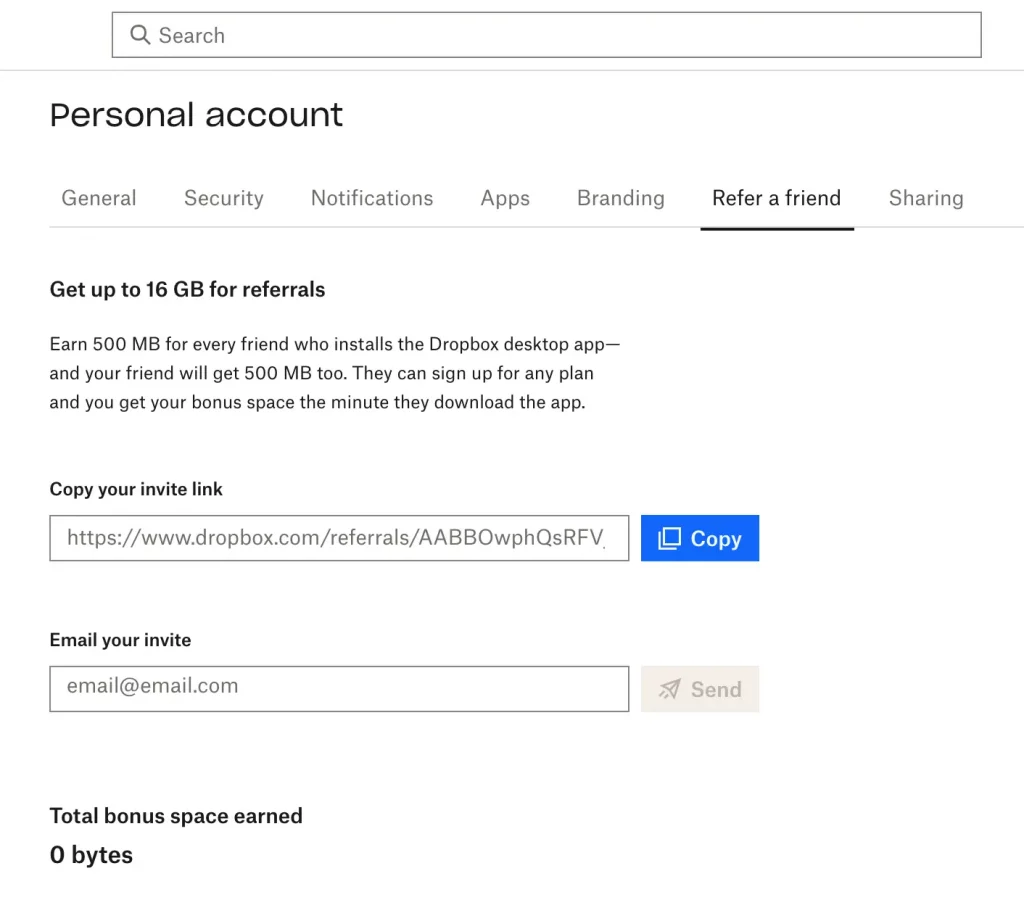
Facilitating friend invitations through easy-to-use social sharing and providing unique referral links, Dropbox ensured that the referral process was user-friendly. This option was prominently featured in the signup process, eliminating the need for users to navigate through menus.
The outcome was remarkable. After the implementation of the referral incentive, Dropbox experienced a staggering 3,900% increase in user numbers. By making the referral program seamless, rewarding, and an integral part of the initial user experience, Dropbox achieved viral success.
2. Airbnb: Mastering A/B Testing
A/B testing, a method comparing two versions to determine performance differences, is a powerful strategy for refining marketing campaigns or web pages. Harvard Business School research highlights its role in accelerating startup growth and attracting venture capital, making it a vital tool.
Airbnb exemplifies a company where A/B testing is ingrained in its DNA, constituting a fundamental aspect of both product development and marketing strategy. Utilizing controlled experiments, Airbnb employs A/B testing in areas such as website design, search algorithms, and property selection, fostering continuous improvement in user experiences.
A noteworthy instance occurred in 2013 when Airbnb revamped its search page, emphasizing enhanced visuals and map features.

Qualitative user studies were conducted to gauge user response. While initial feedback was positive, Airbnb insisted on additional quantitative testing to delve into performance metrics, including click-through rates, time spent on the search page, and booking conversion rates.
Unexpectedly, quantitative results indicated a neutral impact on effectiveness. Further investigation revealed compatibility issues with older versions of Internet Explorer, affecting the click-through rate and distorting overall results. Airbnb promptly addressed this issue, restoring the page’s optimal performance.

This case underscores the importance of comprehensive testing to mitigate the risk of implementing ineffective marketing strategies. By incorporating both qualitative and quantitative assessments, companies gain valuable insights into the impact of changes on user engagement and business metrics, ensuring informed decision-making.
Learn about marketing analytics dashboards here.
3. Duolingo: Engaging Users Through Gamification
Gamification, the infusion of game-like elements into non-game activities, enhances engagement and enjoyment by incorporating features like points, badges, or challenges. This strategy capitalizes on innate human desires for competition and accomplishment.
Duolingo, the language learning app, leverages gamification to motivate users in their language-learning journey. The app introduces rewards, including virtual coins, streak counts, and competitive leaderboards.

Accumulating points or unlocking badges triggers a sense of accomplishment, fostering intrinsic motivation. Users engage in bite-sized lessons, earn points, and compete with friends, transforming the learning process from a task into an enjoyable challenge. These emotional rewards create a positive addictive loop, encouraging users to persist, conquer one more challenge, or reach a new milestone. The outcome is heightened user engagement, increased time spent within the app or system, and a more profound emotional connection to the product.

4. Spotify: Successful Implementation of Freemium and Free Trial Models
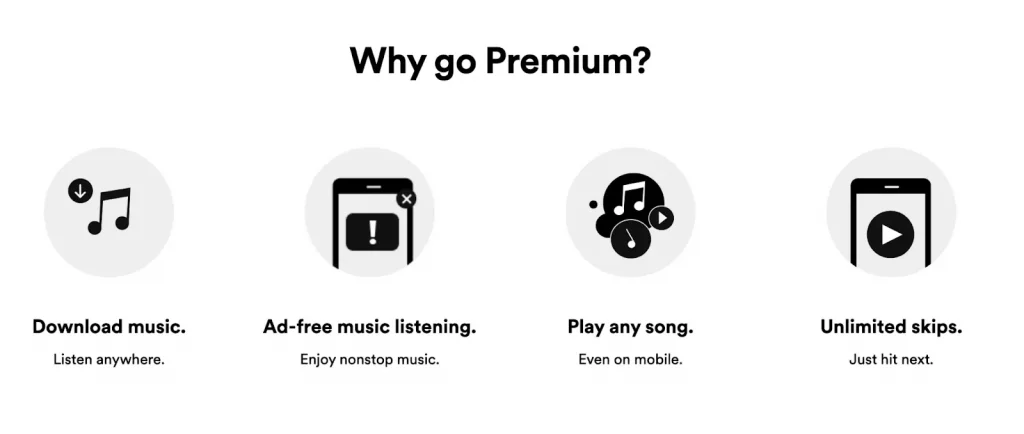
The freemium pricing model has become a cornerstone for many businesses, offering a free basic version while reserving premium features for paying customers. Similarly, free trials allow users to experience the full range of features before committing to a purchase or subscription. Both strategies minimize the barrier to entry, enticing users to explore the product’s value with minimal risk.
In the realm of music streaming, Spotify stands out as a prime example of effective freemium pricing. Users can access a vast music library with the free plan, albeit with occasional ads and limitations on offline listening. The transition to a premium subscription removes these constraints, unlocking additional features and enhancing the overall user experience.

Spotify’s success with this model can be attributed to several key factors:
- Value in the Free Version: Spotify ensures that the free version provides significant value, keeping users engaged with a wide music selection. Certain irresistible features are strategically reserved for the premium subscription, creating a compelling incentive for users to upgrade.
- Clear Calls to Action: The app consistently displays calls to action, emphasizing the benefits of Spotify Premium. The “Why go Premium?” section lists these advantages, guiding users toward a seamless understanding of the enhanced features they could access.
- Seamless Transition: Transitioning from a free account to a premium subscription is designed to be smooth and user-friendly. Multiple payment options are available, allowing users to choose a method that aligns with their preferences and comfort.
- Strategic Use of Free Trials: Spotify occasionally offers free trials for its premium service, adopting a “try-before-you-buy” strategy. This approach allows users to temporarily experience the added benefits, encouraging them to become permanent premium members once the trial period concludes.
5. Uber: Implementing Dynamic Pricing for Optimal Market Dynamics
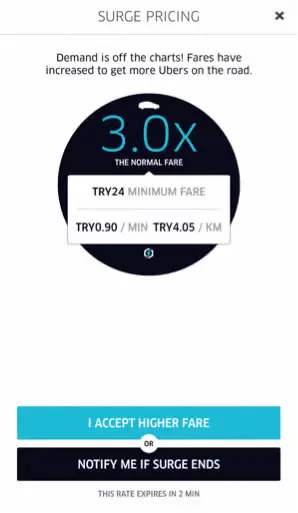
Dynamic pricing, commonly known as surge pricing, is a strategic approach where prices dynamically adjust based on real-time demand and supply. In times of high demand and limited supply, prices rise to optimize revenue, incentivize more service providers, and maintain market equilibrium. Conversely, prices may decrease during periods of low demand to attract more consumers.
Uber serves as a notable example of surge pricing in action, demonstrating the effectiveness of this strategy. During peak demand periods such as rush hours, inclement weather, or major events, Uber elevates its prices. This surge in pricing serves a dual purpose: it encourages more drivers to be available on the road, leading to an improved supply that enhances service availability and reliability. Ultimately, this results in heightened satisfaction among passengers.
Transparency is paramount when implementing surge pricing. Uber, for instance, notifies customers about the surge prices before confirming a ride. Clear communication helps build trust and avoids unpleasant surprises for users. Additionally, the success of surge pricing hinges on the precision of the underlying algorithm. Uber leverages real-time data and advanced algorithms to determine surge pricing, ensuring that it accurately reflects the actual conditions of demand and supply. This data-driven approach helps prevent the perception of surge pricing as a profit-driven tactic that may lead to customer dissatisfaction.
Proactively monitoring the impact of surge pricing on both supply and demand is crucial. Gathering and analyzing customer feedback allows companies to adapt and refine their surge pricing strategy, ensuring it remains effective and customer-friendly. By striking the right balance and incorporating customer insights, surge pricing can be a powerful tool for optimizing market dynamics and enhancing overall service quality.
Also Read: 7-Step Content Marketing Strategy Plan for Noteworthy Digital Presence
6. PayPal: Driving Early Adoption through Incentives
Accelerate the growth of a new product or service by enticing customers to adopt it shortly after its launch. Early adopters play a pivotal role, offering valuable feedback, establishing credibility, and becoming advocates who spread the word.
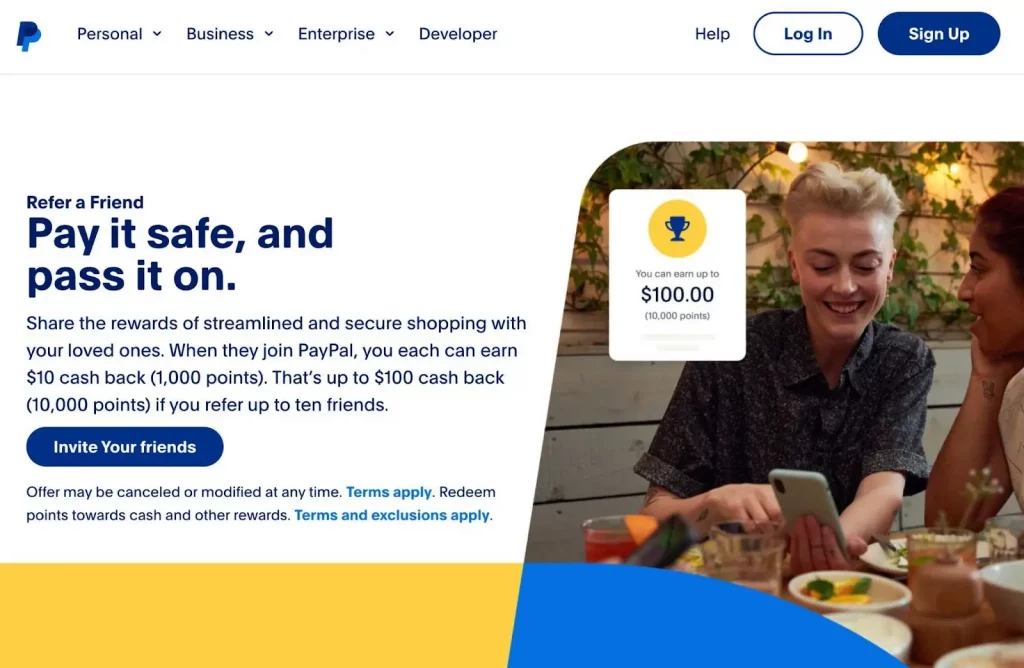
In the early stages of its development, PayPal employed a growth hacking strategy, as outlined in co-founder Peter Thiel’s book “Zero to One.” Recognizing the limitations of traditional advertising, the company turned to referral marketing, swiftly reaching a “critical mass” of 1 million users. PayPal opted for a simple yet effective approach: offering $10 to new users and an additional $10 for each friend they referred.
The outcome was staggering—a daily growth rate ranging from 7 to 10%. To promote early adoption successfully, it is crucial to provide compelling incentives. Beyond monetary rewards, consider incorporating additional perks such as loyalty points, exclusive access, branded merchandise, time-limited bonuses, or “early adopter pricing.”
However, it is essential to avoid sustaining generous incentives indefinitely. This approach can become costly and attract users more interested in the incentives than the actual product, potentially diluting the quality of the customer base. To mitigate these risks, establish clear parameters, such as a specific number of users or a defined time frame, and gradually phase out or modify the incentives. This strategic approach ensures that early adopters are genuinely interested in the product and its long-term value.
7. Zapier: Unleashing Potential through Product Hunt Launch
Product Hunt stands as a virtual hub where tech enthusiasts, venture capitalists, and journalists converge to explore, elevate, and discuss cutting-edge tech products from SaaS companies. It’s not just a platform; it’s a nexus of innovation, making it an essential space for creators seeking exposure to an engaged audience.
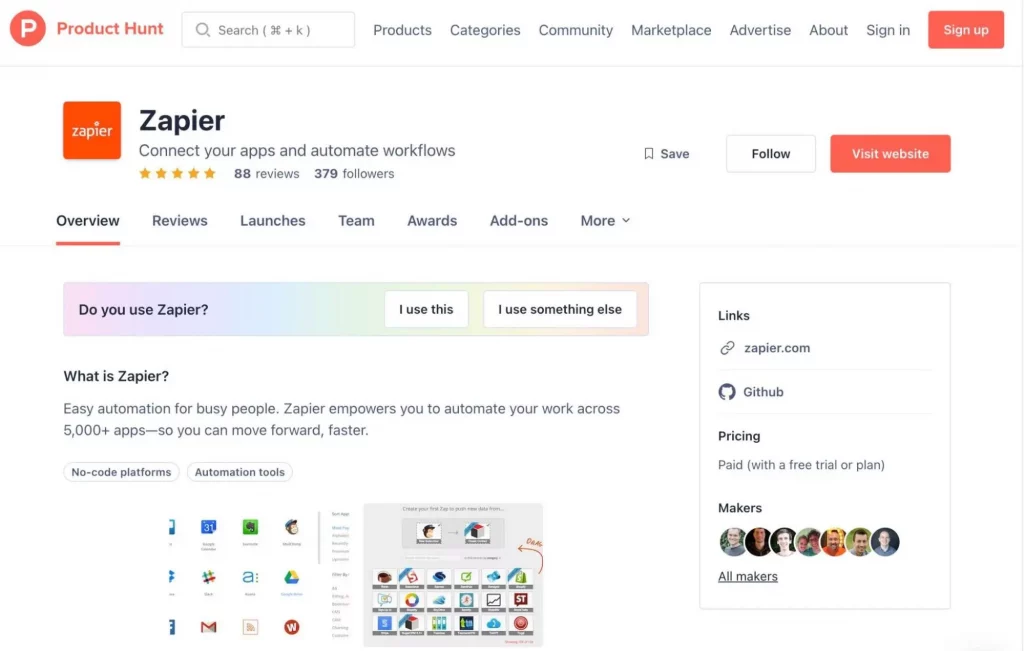
Zapier, a prominent workflow automation tool, strategically harnessed the power of Product Hunt to make a significant impact during its launch. The platform provided an avenue for Zapier to generate anticipation, attract early adopters, and harvest immediate feedback.
Here are five potent strategies to orchestrate a successful launch on Product Hunt:
- Pre-launch Engagement: Dive into discussions, follow relevant topics, and upvote other products of interest. This pre-launch engagement helps build recognition within the community, potentially enhancing engagement when you officially launch.
- Select the Right Hunter: The individual submitting your product is known as the “Hunter.” Choose a Hunter with a commendable reputation on the platform. A respected Hunter instantly lends credibility to your product, enticing more upvotes and attention.
- Offer Exclusives: Sweeten the deal for potential users by incorporating exclusive offers such as extended free trials, discounted rates, or special features. Clearly communicate these incentives in your product description to attract a broader audience.
- Real-time Interaction: Brace yourself for a surge in comments, questions, and feedback on your Product Hunt page upon launch. Ensure your team actively monitors the page, promptly responds to queries, and engages with the community in real time. This active participation fosters confidence and trust in your company.
- Post-launch Follow-up: The launch isn’t a one-and-done affair. Keep the momentum alive by addressing user questions, announcing new features or fixes based on Product Hunt feedback, and sustaining an active presence in the community. Consistent follow-up ensures ongoing interest and growth for your product.
8. Jasper: Fostering Social Media Community Engagement
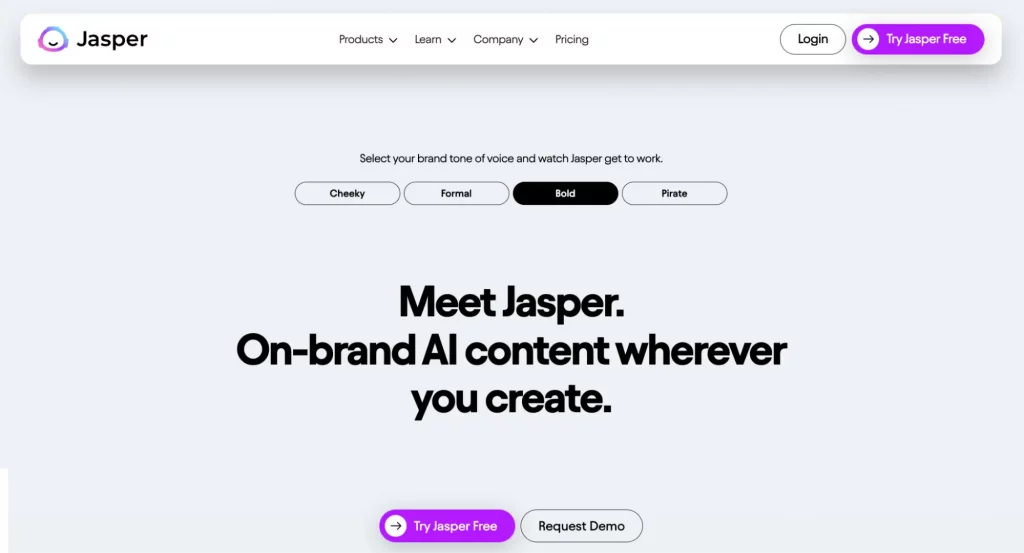
Establishing dedicated social media spaces is a strategic move to cultivate a community where users, fans, and interested individuals can converge to discuss, share, and deepen their understanding of your product. Utilize these platforms not only to exhibit your brand values but also to amplify the reach and influence of your product.
Communities hosted on platforms like Facebook or LinkedIn serve as catalysts for customer engagement, constructive feedback, support, and even innovation. A compelling illustration of successful community building in the tech realm is demonstrated by Jasper, an AI-powered writing assistant.

Jasper not only identified the perfect product-market fit by making complex GPT3 technology accessible on its streamlined platform but also prioritized educating users on maximizing its potential.
An exemplary space is the Jasper Facebook group, where users share ingenious prompts that yield optimal results.
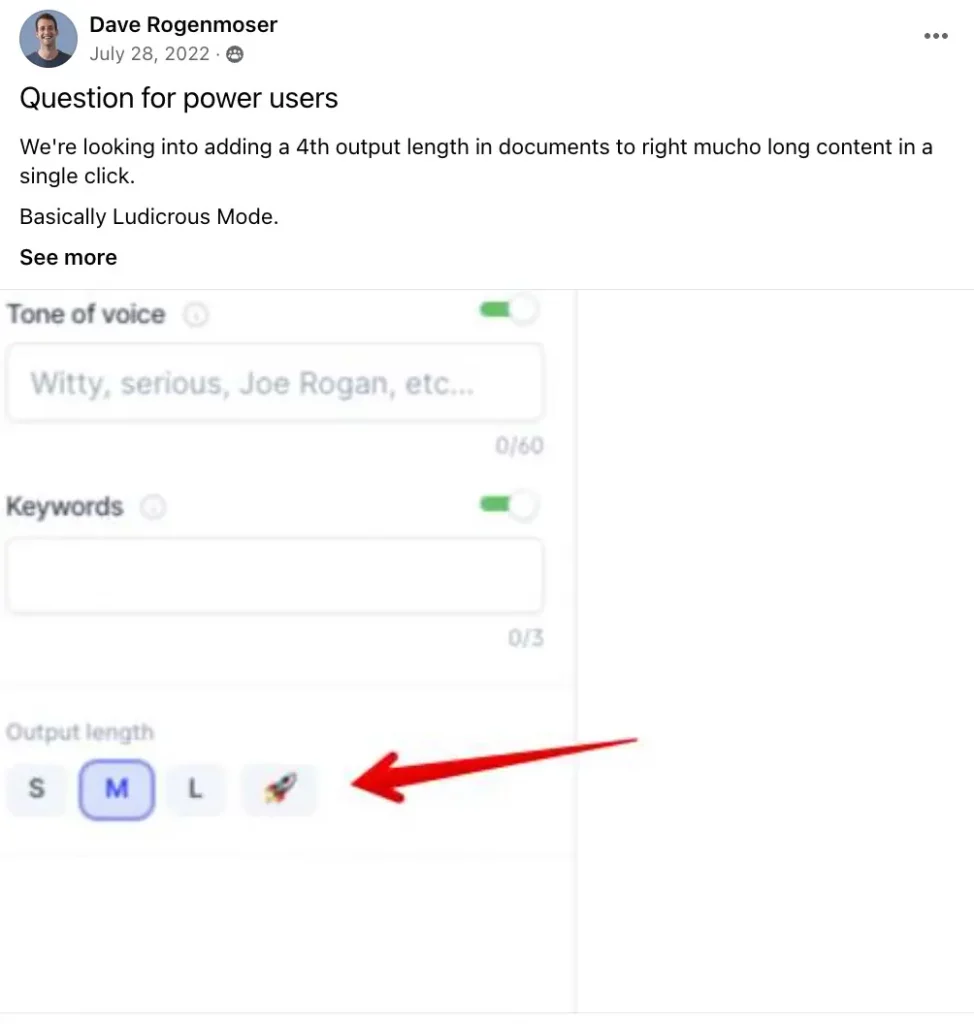
Beyond being a reservoir of shared knowledge, the group fosters a sense of community around the product. It acts as a forum for open conversations and new perspectives. The significance of social communities transcends mere user interactions; they provide invaluable insights for your company. Jasper’s founder actively seeks feedback from users within the Facebook group. Encouraging discussions on usage scenarios and prompting for feedback influences product updates and feature releases.
Moreover, the Jasper Facebook group showcases testimonials, screen captures, and real-world applications from diverse users. This user-generated content (UGC) serves as potent social proof, validating the product’s efficacy for marketing campaigns, including influencer collaborations.

Maintaining an active and engaged Facebook group contributes to Jasper’s vibrant ecosystem, ensuring users derive maximum value from the product. The community actively contributes to ongoing product development and improvement.
To enhance participation within your social media community, consider:
- Periodically inviting experts for informative “ask me anything” (AMA) sessions.
- Showcasing unique features and prompting community members to share their applications.
- Acknowledging and rewarding active contributors, fostering a sense of value and encouraging continued engagement.
Leanr about crafting a winning strategy for your WooCommerce Store.
Conclusion:
In conclusion, the versatility of growth hacking is reshaping the business landscape. Its principles, once synonymous with scrappy startups, have become integral to the success of businesses irrespective of their size. The data-driven, user-centric, and agile nature of growth hacking aligns with the demands of the modern market, where adaptability and innovation are paramount. As businesses navigate the complexities of the digital era, growth hacking stands out as a dynamic and indispensable strategy for achieving substantial and sustainable growth.
Is growth hacking only for startups?
No, while growth hacking gained popularity in startup culture, its principles can be applied to businesses of all sizes. Many established companies also adopt growth hacking strategies to achieve rapid and sustainable growth.
How is growth hacking different from traditional marketing?
Traditional marketing often involves long-term planning, sizable budgets, and conventional strategies. Growth hacking, on the other hand, emphasizes quick experimentation, data-driven decision-making, and cost-effective, unconventional tactics to achieve rapid growth.
What role does content creation play in modern marketing?
Content creation is a cornerstone of modern marketing, providing businesses with a platform to engage, educate, and build authentic connections with their audience. Valuable and original content establishes authority and fosters brand loyalty.
How can businesses justify their content marketing spend?
Demonstrating the tangible value and return on investment (ROI) of content marketing efforts is crucial. Metrics aligned with the brand journey, detailed reports, and clear presentations help secure buy-in from decision-makers.



